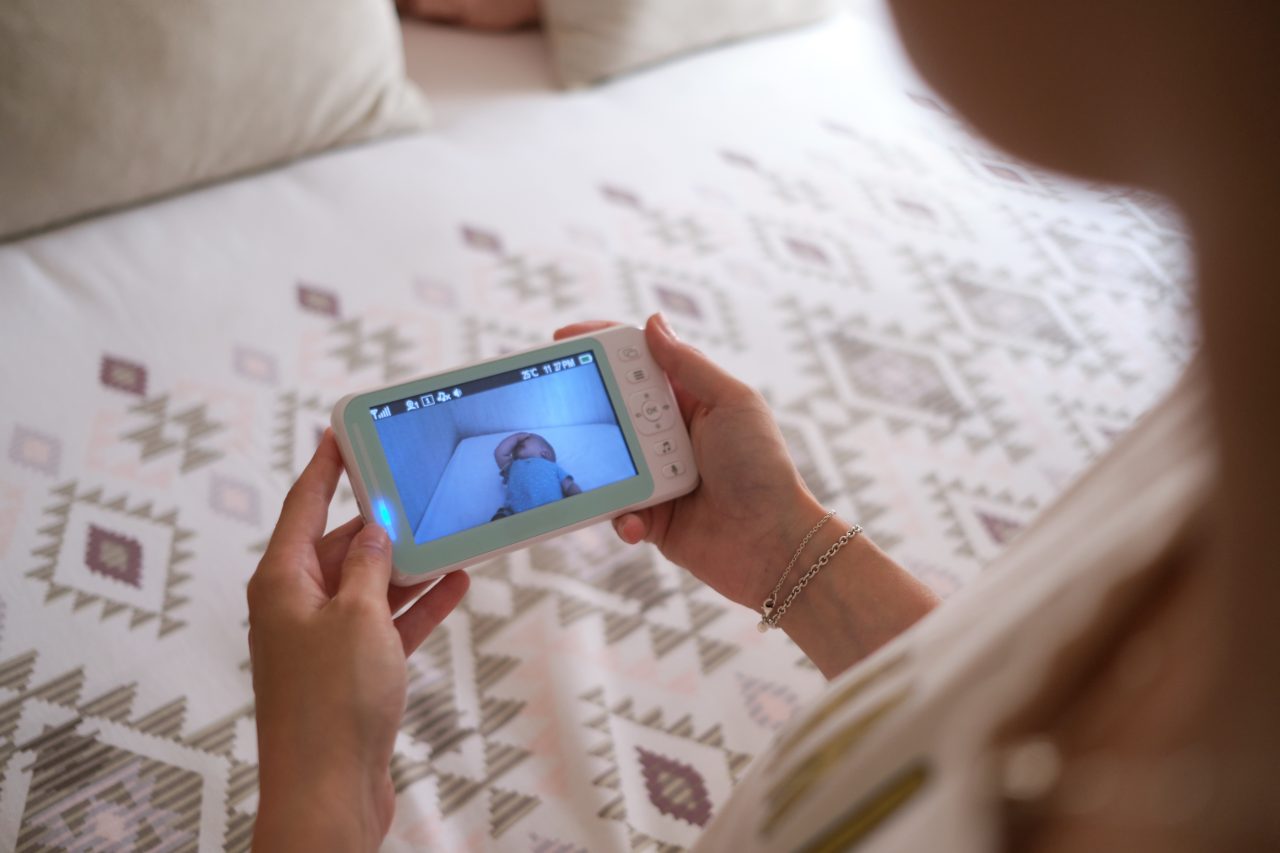So you’ve got this adorable bundle of joy in your life now, and you want to ensure they’re safe and sound, even when sleeping away in their crib. Then baby monitors are exactly what you need. These nifty little gadgets let you keep an eye (or an ear) on your little one from another room, giving you peace of mind while you go about your day. But with so many options, figuring out which one is right for you can be overwhelming.
Types Of Baby Monitors
Let’s start by diving into the basics. These monitors come in different sizes and shapes, ranging from simple to high-tech baby monitors, but generally fall into two main categories: audio and video.
Audio Monitors: Keeping It Simple
Audio monitors, as the name suggests, transmit sound from your baby’s room to a receiver elsewhere in your home. They’re perfect for parents who want to hear if their baby wakes up or starts crying.
Audio monitors use a microphone in the transmitter unit placed in the baby’s room to pick up sounds, such as crying or movements. These sounds are transmitted wirelessly via radio waves to the receiver unit kept with the parent. The receiver amplifies the sounds, allowing the parent to hear them clearly, providing real-time audio monitoring of the baby’s activities and ensuring they can respond promptly to any needs or concerns.
This simple yet effective technology gives parents peace of mind, knowing they can stay connected to their baby even when in another room.
Video Monitors: Seeing Is Believing
Video monitors take things a step further by providing live video footage of your baby’s room. This footage allows you to hear and see what’s going on, which can be especially helpful if you’re worried about things like your baby getting tangled in their blankets or sleeping in an awkward position. Video monitors come with a camera mounted in the nursery and a handheld monitor that displays the video feed.
A baby video monitor works by installing a camera placed in the baby’s room to capture live video footage of the surroundings. This camera is connected wirelessly to a handheld monitor or smartphone app, allowing parents to view the video feed from another location in the house in real time.
Some video monitors also include microphones to transmit audio and video, enabling parents to hear any sounds from the baby’s room. Baby video monitors allow parents to see and hear their baby, providing reassurance and security.

High-Tech Baby Monitors: Innovations In Parental Monitoring
As technology advances, baby monitors evolve, offering parents a wide array of high-tech options. These high-tech models include monitors that connect to smartphones via dedicated apps, allowing parents to check in on their little ones remotely.
Utilising Wi-Fi or Bluetooth technology, these monitors establish a secure connection between the camera in the baby’s room and the parent’s smartphone, providing real-time video and audio streaming. This real-time update enables greater flexibility and convenience. It allows parents to keep track of their baby from anywhere with an internet connection, surpassing the limited range of traditional video monitors within the home.
Other recent baby monitors come equipped with various unique features that cater to the evolving needs of parents. Some of these features include:
- High-definition (HD) Video Quality: HD video quality is common in modern baby monitors, offering crisp and clear images of your baby’s room.
- Two-Way Audio: Two-way audio functionality enables parents to communicate with their baby or caregiver through the baby monitor.
- Motion And Sound Detection: Many modern baby monitors feature motion and sound detection capabilities, alerting parents to any unusual activity or noise in the baby’s room.
- Temperature And Humidity Sensors: Some advanced baby monitors are equipped with temperature and humidity sensors, allowing parents to monitor the climate conditions in their baby’s room.
- Pan-Tilt-Zoom (PTZ) Functionality: Pan-tilt-zoom functionality enables parents to remotely control the camera’s movements, allowing them to adjust the viewing angle and zoom in to get a closer look at their baby.
- Smart Home Integration: Some baby monitors integrate with smart home systems, such as Google Assistant and Amazon Alexa, enabling parents to control the monitor with voice commands.
Wearable Monitors: A New Frontier In Baby Monitoring
Wearable monitors have emerged, which track vital signs like heart rate and breathing, providing additional peace of mind. These devices attach to your baby’s clothing or go around their ankle like a bracelet and track their heart rate, breathing, and sleep patterns. While these monitors can provide valuable insights into your baby’s health and well-being, they do not replace traditional baby monitors and should be used alongside them.
These wearable devices typically employ sensors and wireless transmitters to monitor the baby’s physiological parameters, transmitting the data to a receiver unit or smartphone app for analysis. These high-tech options give parents even greater flexibility and insight into their baby’s well-being, reflecting the evolving landscape of parental monitoring technology.
Key Takeaways
Baby monitors are a must-have for any parent who wants to keep an eye (and an ear) on their little one while sleeping. Whether you opt for a simple audio monitor or a high-tech baby monitor with bells and whistles, the most important thing is finding a monitor that gives you peace of mind and fits your family’s needs. So choose the perfect baby monitor for you, and rest easy knowing that your little one is safe and sound, even when you’re not in the room.









No Comments